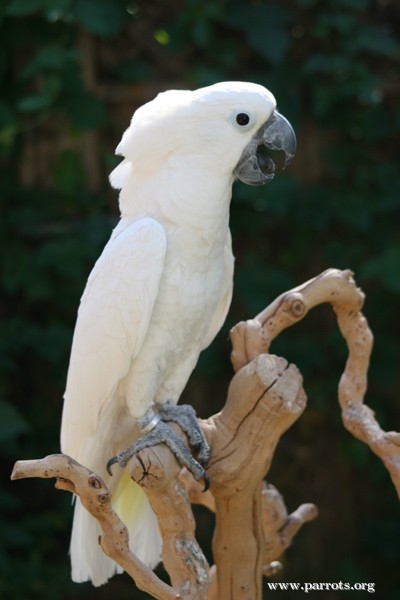

Vetter (2009) estimated that forest loss within the geographic and elevation range of C. Although forest within parts of its range remains relatively intact, exploitation by logging companies has become intensive, and some areas are have been cleared for agriculture and mining.

As both adults and young are taken, exploitation has likely reached unsustainable levels (Rowley and Boesman 2020). Nine live birds were for example offered for sale through Philippine social media platforms within just a month of observation (Canlas et al. The increased usage in social media and online platforms are additionally providing alternative methods of illegal trade in non-native species in the Philippines (Canlas et al. Illegal trade continues and is probably grossly underestimated, with many birds being smuggled through Sulawesi and ending up in the bird markets of western Indonesia or being transported to the Philippines (S. However, an investigation by ProFauna revealed that at least 200 White Cockatoo were caught from the wild in North Halmahera in 2007, far exceeding the quota (ProFauna in litt. In 2007, the catch quota was 10 pairs, and only for breeding purposes. Catch quotas for the species were exceeded by up to 18 times in some localities, indicating that trappers were removing in the order of 17% of the population annually. In 1991, an estimated minimum of 6,600 birds (possibly representing a mere quarter of the actual figure) were taken from the wild. Unsustainable levels of trapping for the cage-bird trade pose the greatest threat. 2016). Annual harvests have declined in actual terms and as a proportion of the remaining population in recent years, but illegal trade continues and is likely to have been underestimated (S. CITES data show significant harvest rates for the cage bird trade during the early 1990s, extending at least to the end of that decade (ProFauna, S. Recent observations indicate that rapid declines are on-going, and are predicted to increase in the future (Vetter 2009). It remains locally common: in 1991-1992, the population was estimated at 42,545-183,129 birds (Lambert 1993), although this may be an underestimate as it was largely based on surveys from Bacan and not Halmahera where the species may have been commoner.

Records from Obi and Bisa are thought to reflect introductions, and an introduced population breeds locally in Taiwan (China). Whilst levels of legal trade has decreased it is still widespread and ill-enforced, illegal unrecorded and unregulated trade is highly likely, so the population is inferred to be declining at a rapid rate, and is predicted to become very rapid over the next three generations (50 years).Ĭacatua alba is endemic to the islands of Halmahera, Bacan, Ternate, Tidore, Kasiruta and Mandiole in North Maluku, Indonesia. Loss of forest which the species is dependent on, likely worsens declines due to removal of habitat and increased levels of trapping due to improved access into forest. Significant changes in forest cover on Halmahera appear to have driven a concomitant decline in the cockatoo population (F. More recent data, however, project more moderate losses of 20-30% of forest over three generations (Global Forest Watch 2021). alba to be c.20.2% between 19, and projected the loss of c.65.4% of forest in its range over the next three generations. This study estimated the rate of forest loss within the geographic and elevation range of C. Vetter (2009) used remote sensing techniques to track the rate and spatial pattern of forest loss in the North Maluku Endemic Bird Area between 19, and projected rates of deforestation over the next three generations for birds in the region with restricted range.

CITES data indicate that at its peak in 1991, the legal international cage-bird trade was taking c.17% of the global population annually. Trend justification The predominant threat is from unsustainable levels of trapping for the cage-bird trade. Population justification The global population was formerly estimated to number c.43,000-183,000 individuals (Lambert 1993), however no more recent estimate has been made. It has therefore been uplisted to Endangered. Justification of Red List Category This species has undergone a rapid population decline, principally owing to unsustainable levels of exploitation, and declines are predicted to become very rapid in the future based on projected future rates of forest loss along with continued pressure from illegal trade.


 0 kommentar(er)
0 kommentar(er)
